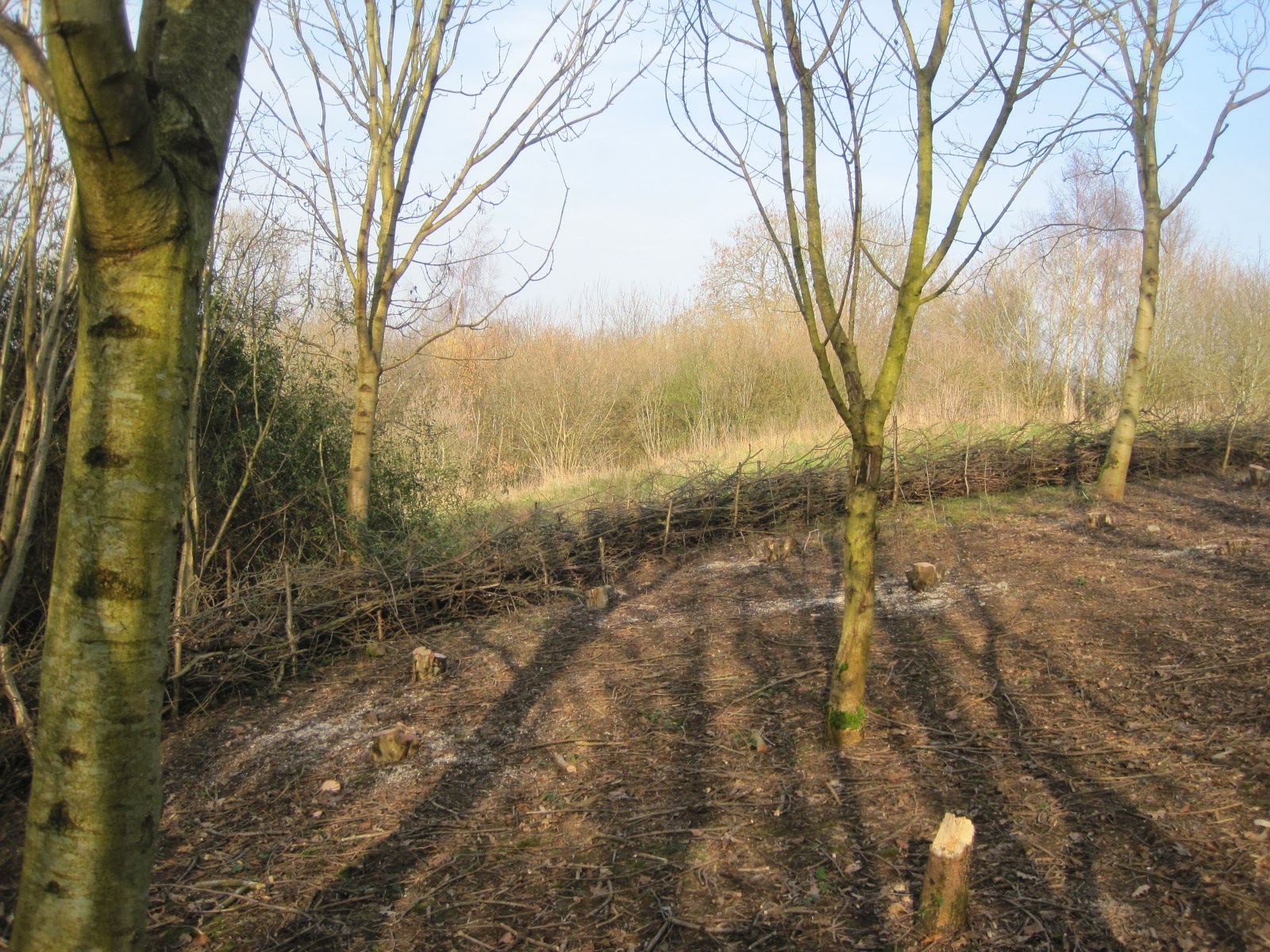There are four main reasons we cut trees at Filnore Woods.
1. To coppice trees so that they re-shoot and produce numerous stems - this is especially done on hazel.
2. To thin the number of trees so that they don't grow too tall and spindly. Expect to see more of this thinning in future as we have allowed our trees to grow a bit too close to each other for too long.
3. To make paths safe and passable by cutting off projecting branches that could poke out an eye or rip a coat.
4. To remove fallen trees and dangerously leaning trees. We have had to cut off several willows, silver maples and some dogwood stems in the old tree nursery, that had fallen across paths.
The photo below shows a dead stem on a silver maple tree in the former Northavon tree nursery near post 16. (In the photo you can see post 16 through the gap between stems.) This dead stem needs to be cut off before it breaks. As well as being dead it's leaning at an angle of 20 degrees from the vertical.
The silver maple behind and to the left is alive but the stem is damaged and it's leaning at about 45 degrees. I have been keeping an eye on it and it appears to be subsiding. So I'm afraid it will also have to be felled soon. We don't want anyone getting injured.
And this beech tree near post 14 surprised us by up-rooting last week.
High winds and soft, wet soil probably helped, but there must have been some weakness or decay in the roots. Most trees don't fall over.
Some small branches have been removed so you can get past. We may use the trunk wood to make a bench seat later in the year.
































